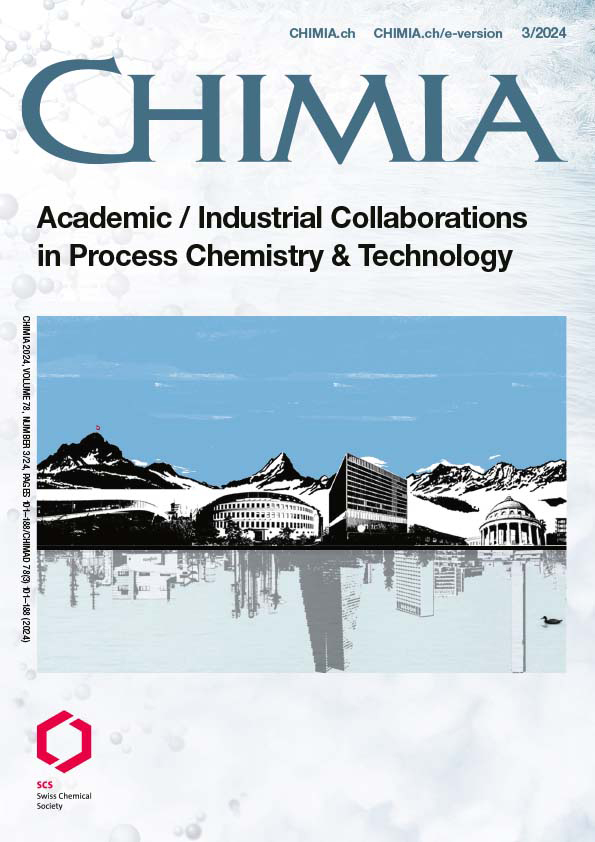Enhanced Mechanistic Understanding Through the Detection of Radical Intermediates in Organic Reactions
DOI:
https://doi.org/10.2533/chimia.2024.123PMID:
38547013Keywords:
Mass spectrometry, Mechanistic studies, Radical reactions, Radical trappingAbstract
Two applications of a radical trap based on a homolytic substitution reaction (SH2') are presented for the trapping of short-lived radical intermediates in organic reactions. The first example is a photochemical cyanomethylation catalyzed by a Ru complex. Two intermediate radicals in the radical chain propagation have been trapped and detected using mass spectrometry (MS), along with the starting materials, products and catalyst degradation fragments. Although qualitative, these results helped to elucidate the reaction mechanism. In the second example, the trapping method was applied to study the radical initiation catalyzed by a triethylboronoxygen mixture. In this case, the concentration of trapped radicals was sufficiently high to enable their detection by nuclear magnetic resonance (NMR). Quantitative measurements made it possible to characterize the radical flux in the system under different reaction conditions (including variations of solvent, temperature and concentration) where modelling was complicated by chain reactions and heterogeneous mass transfer.
Funding data
-
Syngenta International
-
Engineering and Physical Sciences Research Council
Grant numbers EP/N509802/1
Downloads
Published
Issue
Section
License
Copyright (c) 2024 Ivan Ocaña, Peter J. H. Williams, James Donald, Neil Griffin, George Hodges, Andrew R. Rickard, Victor Chechik

This work is licensed under a Creative Commons Attribution 4.0 International License.







